Abstract
Birnbaum, Jerome (University of Cincinnati College of Medicine, Cincinnati, Ohio), and Herman C. Lichstein. Conversion of d-biotin to biotin vitamers by Lactobacillus arabinosus. J. Bacteriol. 89:1035–1040. 1965.—Saccharomyces cerevisiae utilizes d-biotin, biotin sulfoxide, and several vitamers of biotin, whereas Lactobacillus arabinosus responds to biotin and biotin sulfoxide of the naturally occurring forms of the vitamin. The use of these organisms for differential assay permitted investigation into possible conversion of d-biotin to vitamers of biotin by cells of L. arabinosus. Cells were grown in modified Wright-Skeggs medium containing several levels of biotin. No differences were detected between the assays for free intracellular or bound biotin up to 48 hr of growth. However, at 15 to 16 hr, in media containing an excess of biotin, the lactobacillus assay value for menstruum biotin dropped markedly, whereas the yeast assay showed no change. This suggested that biotin was converted to vitamers not active for L. arabinosus. The biotin-converting system appears to have characteristics of an enzyme system, i.e., a temperature optimum at 37 C, a broad pH optimum of 4.3 to 6.5, and requirements for Mg and Mn ions. Experiments suggest that increasing hydrogen ion concentration is a major physiological mechanism controlling the formation of this system. The vitamers were separated chromatographically and were found to have RF values of 0.44 and 0.94, and are combinable and uncombinable with avidin, respectively. The physiological role of biotin conversion is discussed in relation to control of cell populations in cultures of L. arabinosus.
Full text
PDF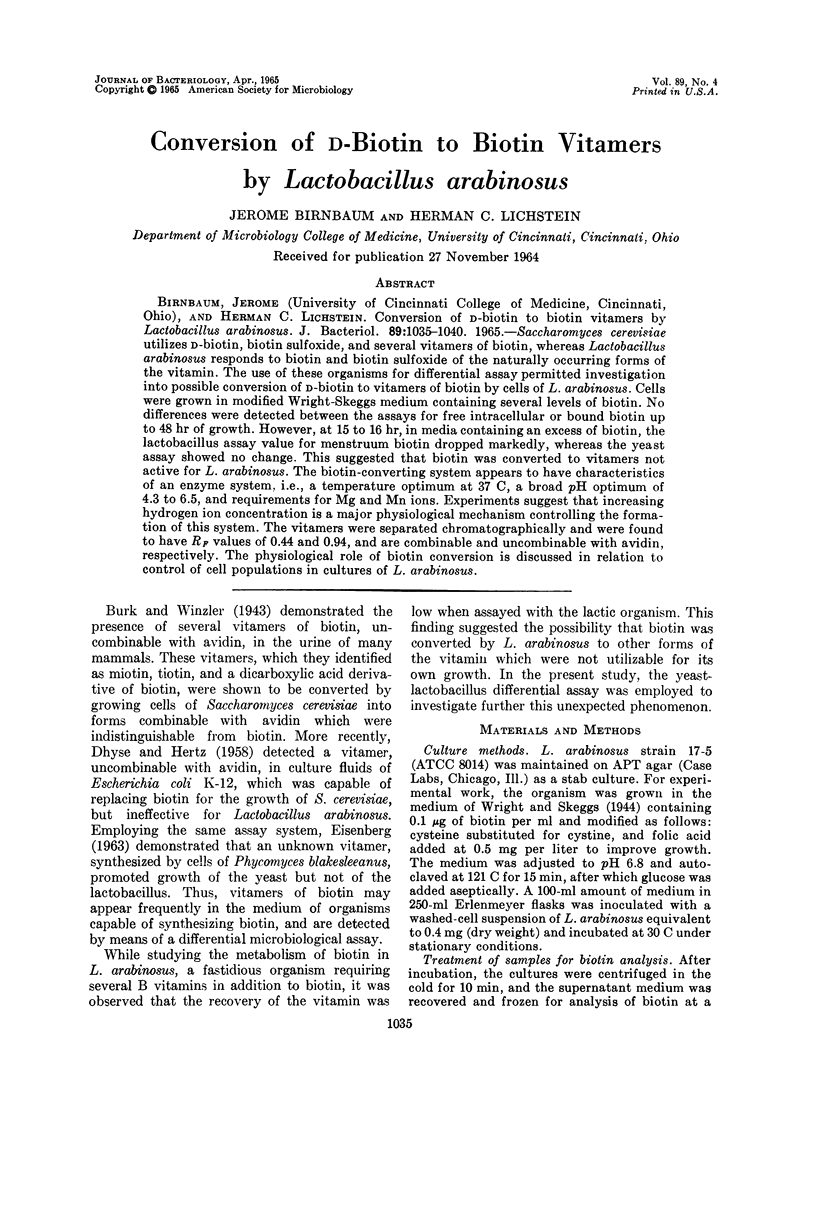
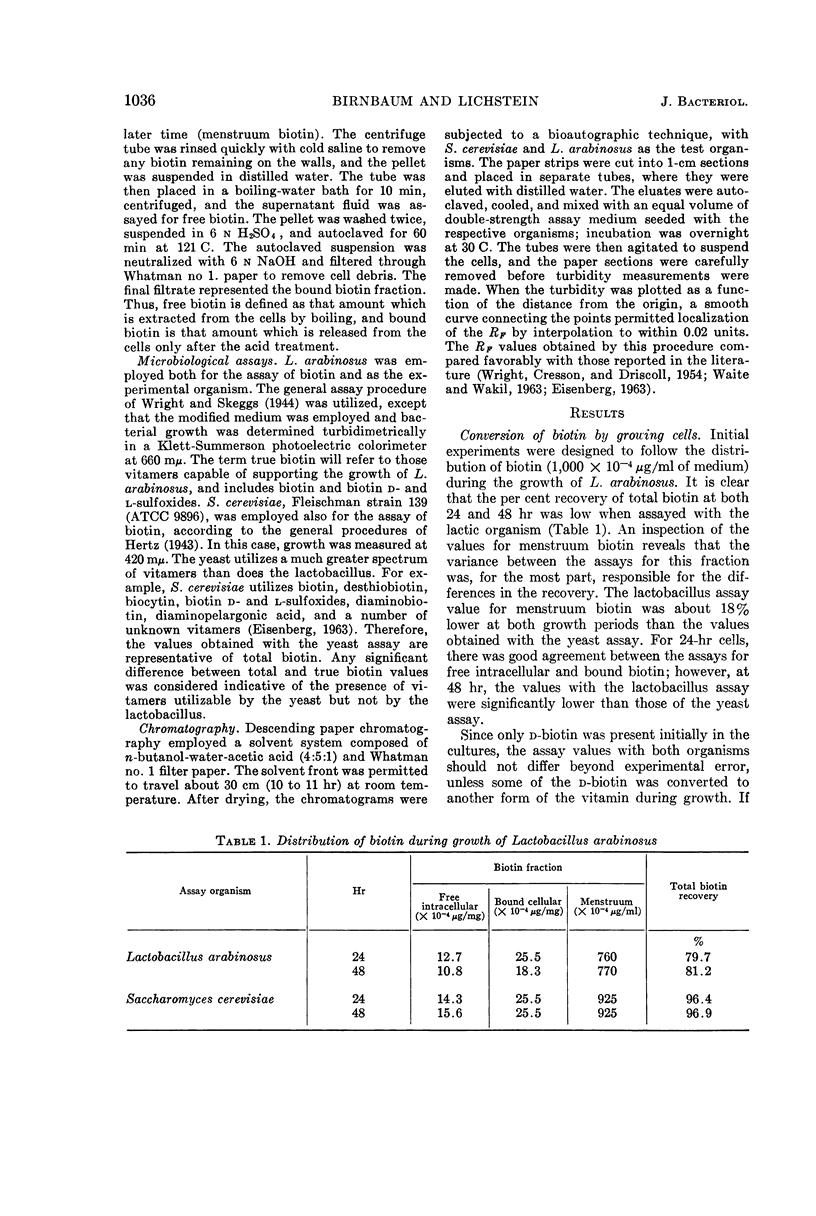
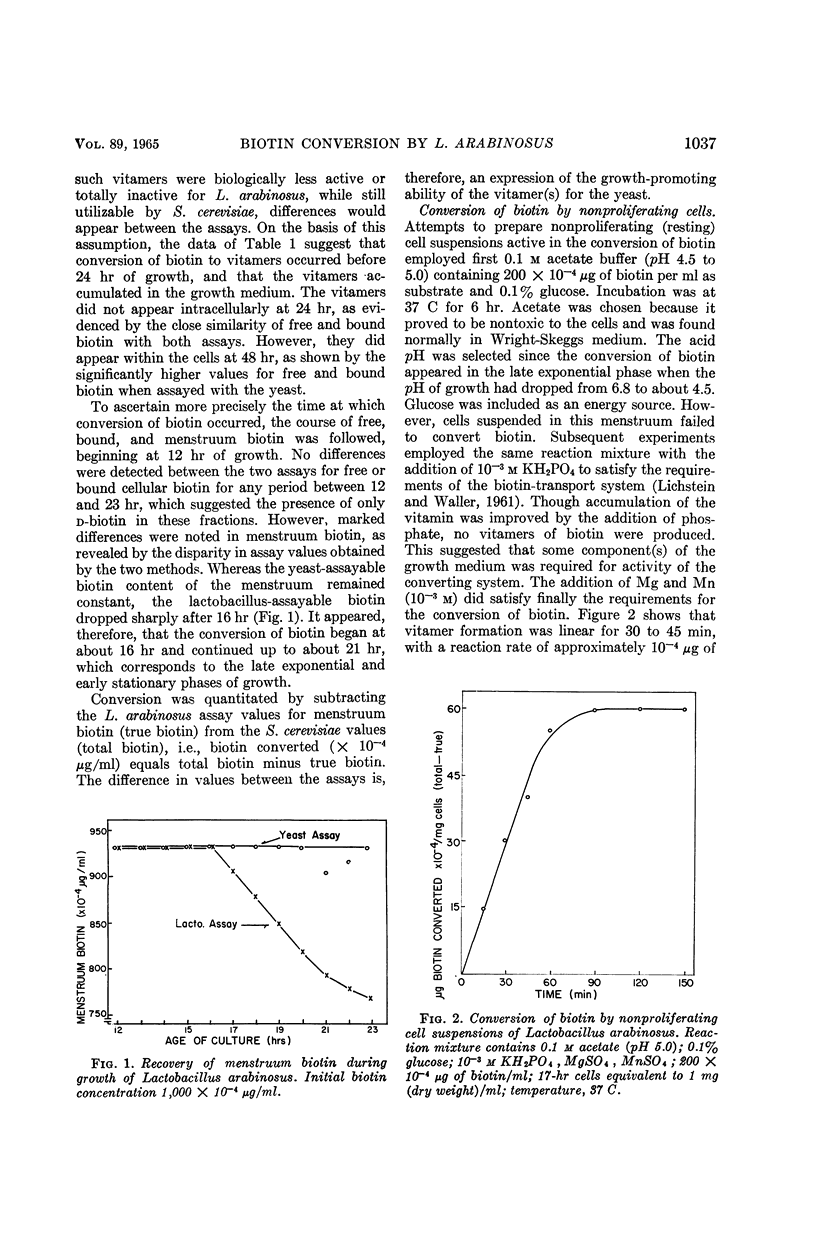
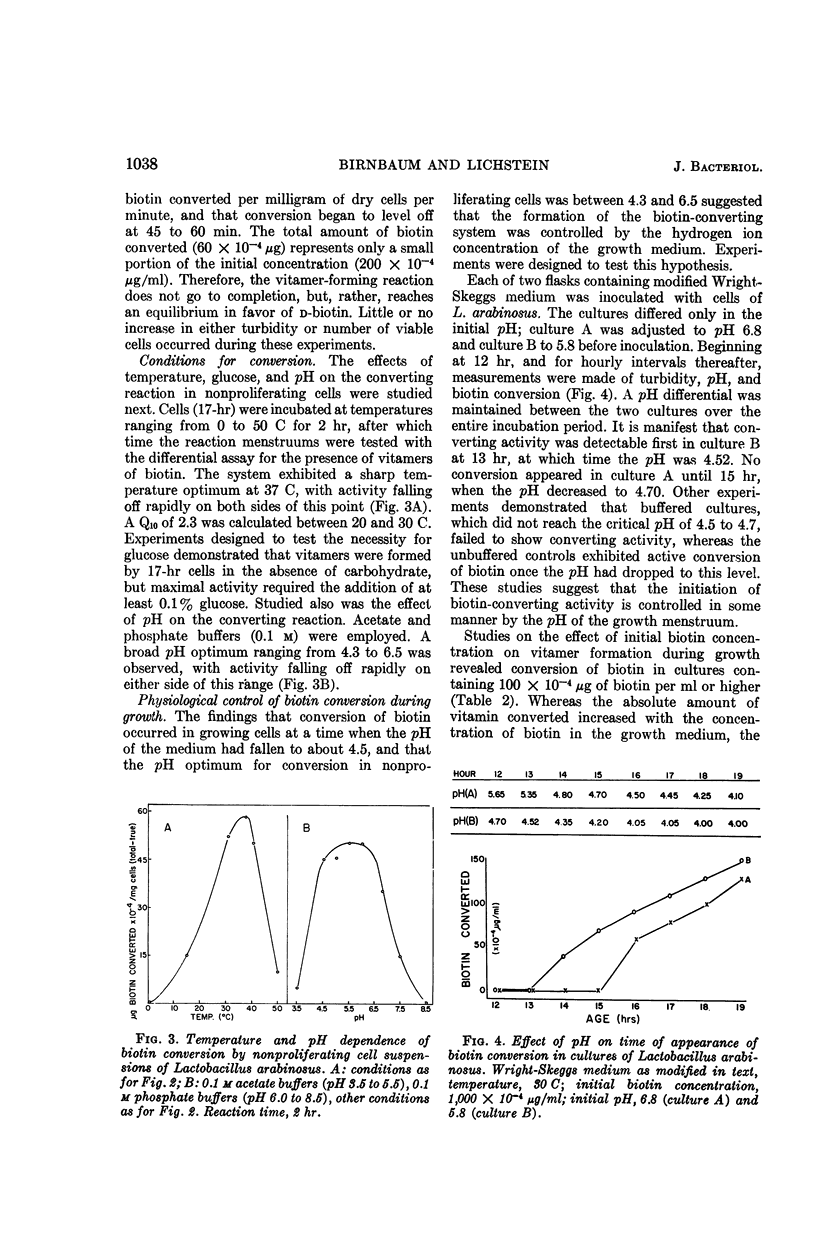
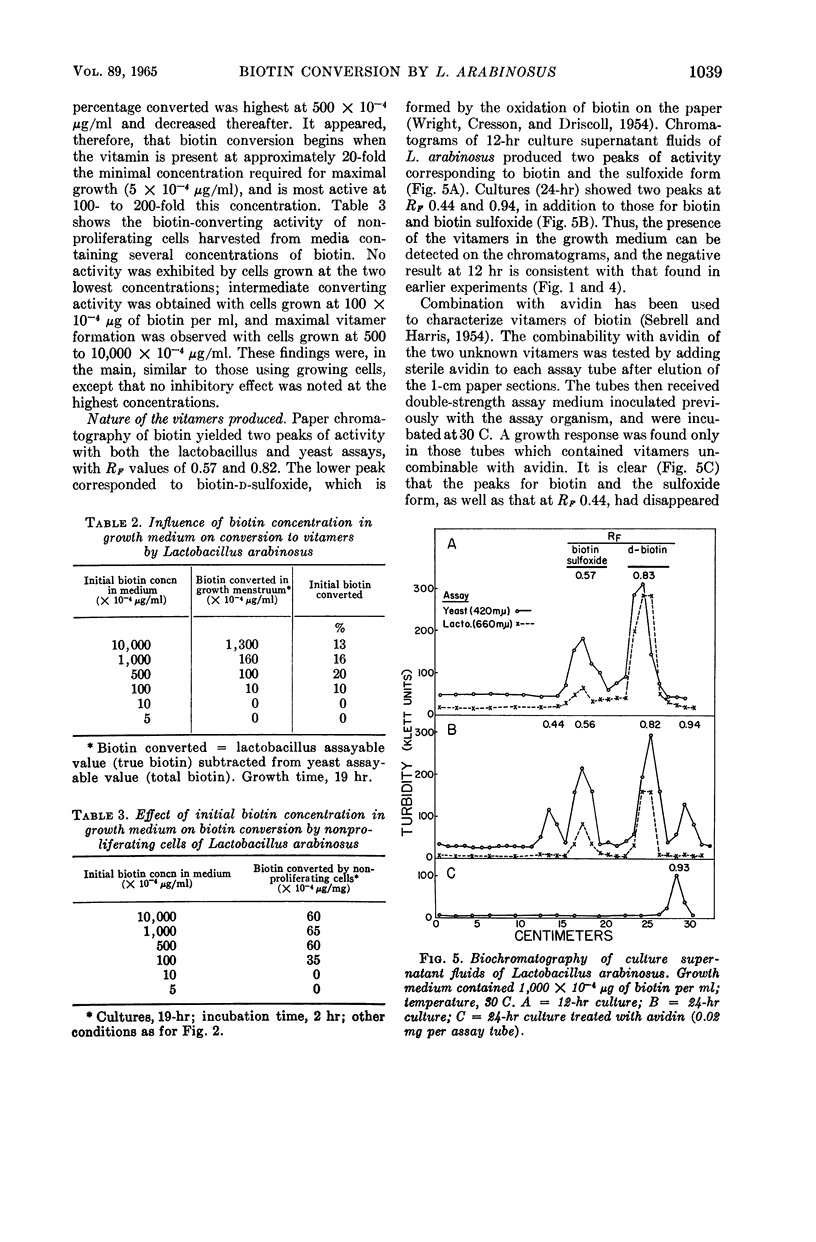
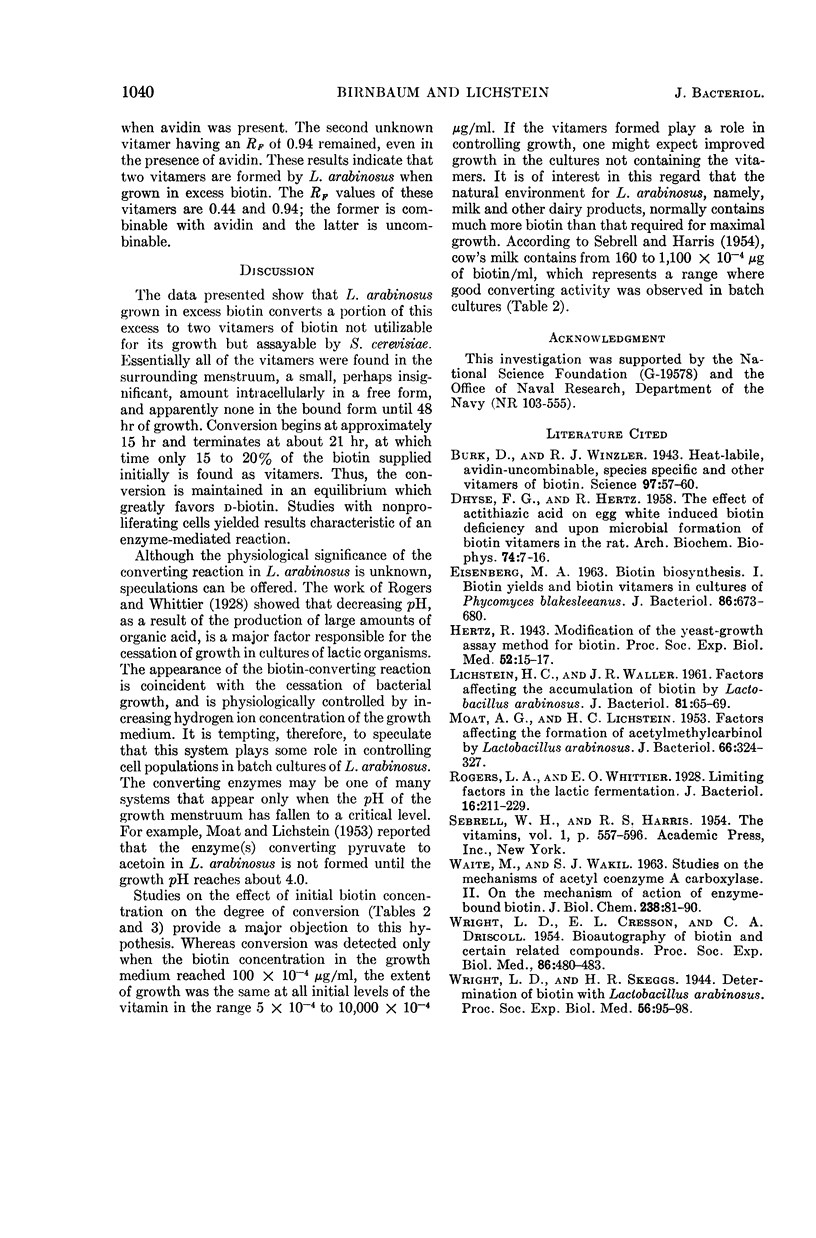
Selected References
These references are in PubMed. This may not be the complete list of references from this article.
- Burk D., Winzler R. J. HEAT-LABILE, AVIDIN-UNCOMBINABLE, SPECIES-SPECIFIC AND OTHER VITAMERS OF BIOTIN. Science. 1943 Jan 15;97(2507):57–60. doi: 10.1126/science.97.2507.57. [DOI] [PubMed] [Google Scholar]
- DHYSE F. G., HERTZ R. The effects of actithiazic acid on egg white-induced biotin deficiency and upon the microbial formation of biotin vitamers in the rat. Arch Biochem Biophys. 1958 Mar;74(1):7–16. doi: 10.1016/0003-9861(58)90194-2. [DOI] [PubMed] [Google Scholar]
- EISENBERG M. A. BIOTIN BIOSYNTHESIS. I. BIOTIN YIELDS AND BIOTIN VITAMERS IN CULTURES OF PHYCOMYCES BLAKESLEEANUS. J Bacteriol. 1963 Oct;86:673–680. doi: 10.1128/jb.86.4.673-680.1963. [DOI] [PMC free article] [PubMed] [Google Scholar]
- LICHSTEIN H. C., WALLER J. R. Factors affecting the accumulation of biotin by Lactobacillus arabinosus. J Bacteriol. 1961 Jan;81:65–69. doi: 10.1128/jb.81.1.65-69.1961. [DOI] [PMC free article] [PubMed] [Google Scholar]
- MOAT A. G., LICHSTEIN H. C. Factors affecting the formation of acetylmethylcarbinol by lactobacillus arabinosus. J Bacteriol. 1953 Sep;66(3):324–327. doi: 10.1128/jb.66.3.324-327.1953. [DOI] [PMC free article] [PubMed] [Google Scholar]
- Rogers L. A., Whittier E. O. LIMITING FACTORS IN THE LACTIC FERMENTATION. J Bacteriol. 1928 Oct;16(4):211–229. doi: 10.1128/jb.16.4.211-229.1928. [DOI] [PMC free article] [PubMed] [Google Scholar]
- WAITE M., WAKIL S. J. Studies on the mechanism of action of acetyl coenzyme A carboxylase. II. On the mechanism of action of enzyme-bound biotin. J Biol Chem. 1963 Jan;238:81–90. [PubMed] [Google Scholar]
- WRIGHT L. D., CRESSON E. L., DRISCOLL C. A. Bioautography of biotin and certain related compounds. Proc Soc Exp Biol Med. 1954 Jul;86(3):480–483. doi: 10.3181/00379727-86-21140. [DOI] [PubMed] [Google Scholar]


